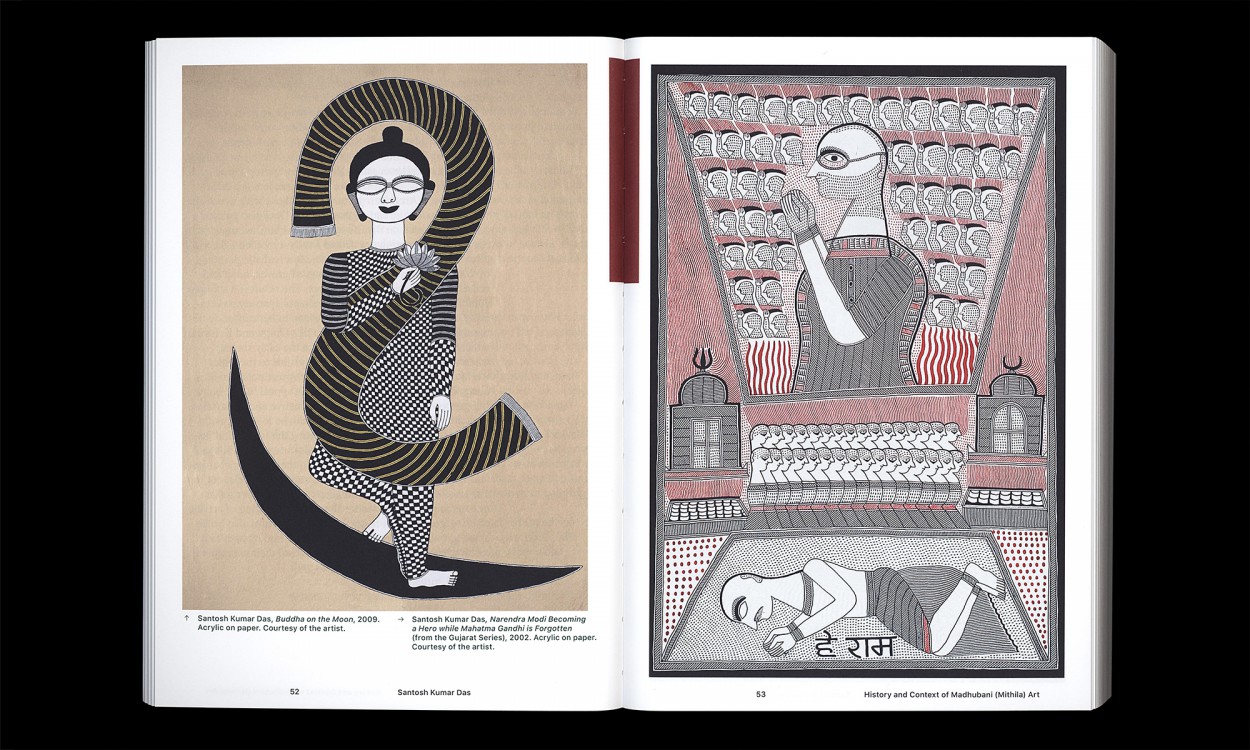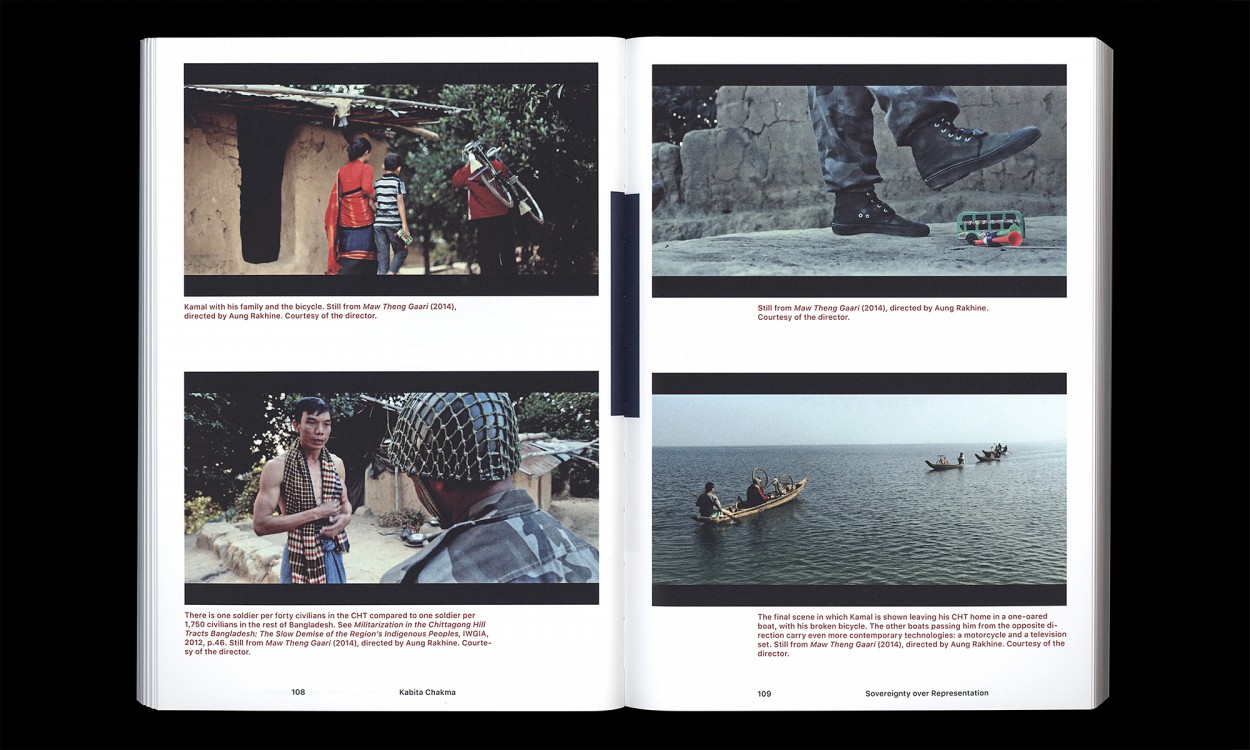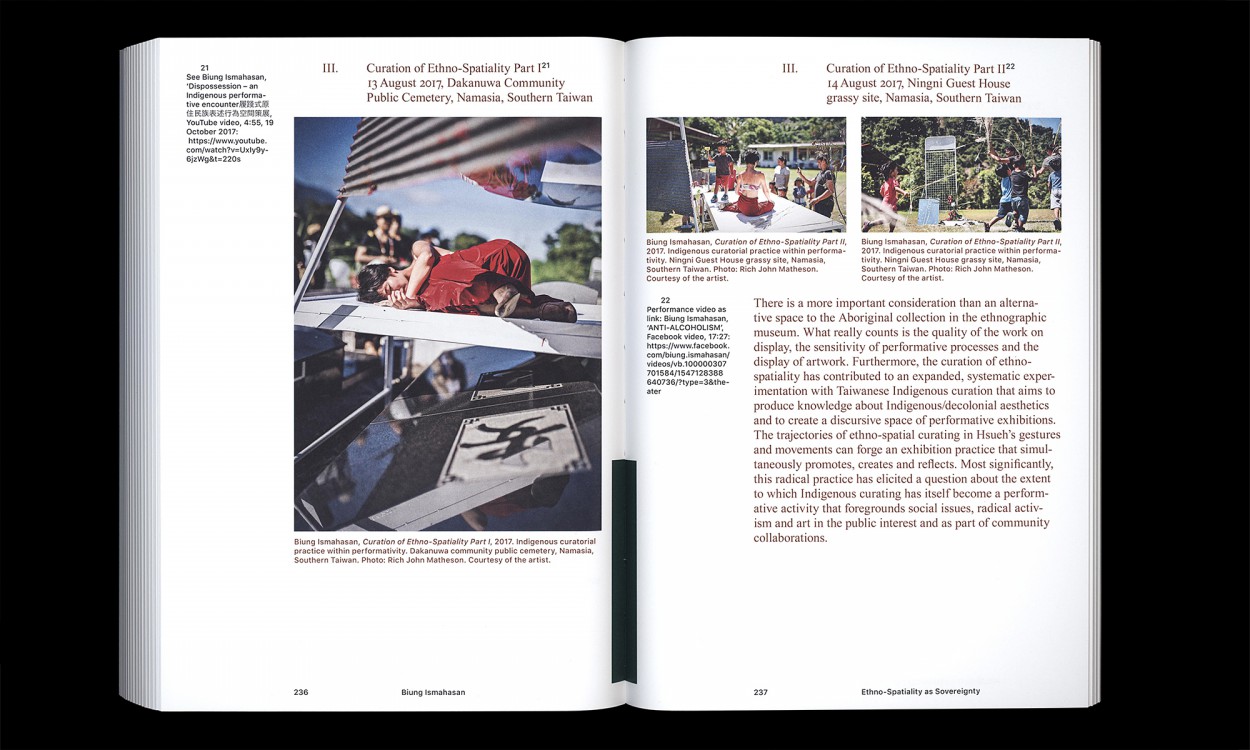BOOK:Trilogy, Contemporary Art Norway (OCA)
 Contemporary Art Norway (OCA) announceρ the completion of the publication trilogy: “Mázejoavku. Indigenous Collectivity and Art”, “Let the River Flow. An Indigenous Uprising and its Legacy in Art, Ecology and Politics” and “Sovereign Words. Indigenous Art, Curation and Criticism”. This trilogy makes essential reading for anyone wishing to gain an understanding of Indigenous perspectives regarding the urgent calls for decolonisation and Indigenisation in the global creative fields and beyond. The publications also set the scene for two important OCA projects: the exhibition “Actions of Art & Solidarity” opening January 15, 2021 at Kunsternes Hus, Oslo, as well as the transformation of the Nordic Pavilion, Venice Biennale 2022 by Sámi artists Máret Ánne Sara, Pauliina Feodoroff and Anders Sunna. Members of the curatorial group working on the pavilion have also contributed to the trilogy. Let the River Flow. An Indigenous Uprising and its Legacy in Art, Ecology and Politics: The Áltá Action* (c. 1978–82) radically shook the course of history in the Nordic region. Its call to ‘let the river live’ rallied against the construction of a large dam across the Álttáeatnu river on the Norwegian side of Sápmi, the Sámi homeland. The Action catapulted the demands for Indigenous sovereignty to the forefront of the politics of the time, and grew into an unexpectedly broad movement of solidarity in which Sámi artists played a central role. Many key questions raised by the Áltá Action pertinent in the region and beyond remain unresolved today. The book makes essential reading for any discussion regarding how governments, artists and citizens will act upon these questions within the frame of today’s worldwide call for decolonisation and Indigenisation. Mázejoavku. Indigenous Collectivity and Art: The legendary Mázejoavku Group (1978–1983) was the first group of Sámi artists, and amongst the first worldwide, to declare itself an Indigenous artist collective. Its members fundamentally changed the perception of Sámi aesthetics in the Nordic region and took a front-line position in the reclaiming of Sámi sovereignty. In 1978, eight Sámi artists who’d completed their formal training made plans to return to Sápmi to form an arts collective that would explore themes of Sámi identity. The group’s founding members were: Aage Gaup, Trygve Lund Guttormsen, Josef Halse, Berit Marit Hætta, Britta Marakatt-Labba, Hans Ragnar Mathisen, Rannveig Persen, and Synnøve Persen. The Mázejoavku Art Collective Group founders were inspired by other arts collectives in Norway and internationally, which similarly sought to work collectively to make art in support of political agendas. At that time, Máze was a hotbed for the Áltá Conflict protests against plans for a hydroelectric dam on the Alta River, and the Máze Group’s house served as a base of operations for many protesters. Sovereign Words. Indigenous Art, Curation and Criticism: The publication draws upon the challenges faced today by cultural workers, Indigenous and non-Indigenous, to engage meaningfully and ethically with the histories, presents and futures of Indigenous cultural practices and world-views. Sixteen Indigenous voices convene to consider some of the most burning questions surrounding this field. How will novel methodologies of word/voice-crafting be constituted to empower the Indigenous discourses of the future? Is it sufficient to expand the Modernist art-historical canon through the politics of inclusion? Is this expansion a new form of colonisation, or does it foster the cosmopolitan thought that Indigenous communities have always inhabited? To whom does the much talked-of ‘Indigenous Turn’ belong? Does it represent a hegemonic project of introspection and revision in the face of today’s ecocidal, genocidal and existential crises? -Dimitris Lempesis
Contemporary Art Norway (OCA) announceρ the completion of the publication trilogy: “Mázejoavku. Indigenous Collectivity and Art”, “Let the River Flow. An Indigenous Uprising and its Legacy in Art, Ecology and Politics” and “Sovereign Words. Indigenous Art, Curation and Criticism”. This trilogy makes essential reading for anyone wishing to gain an understanding of Indigenous perspectives regarding the urgent calls for decolonisation and Indigenisation in the global creative fields and beyond. The publications also set the scene for two important OCA projects: the exhibition “Actions of Art & Solidarity” opening January 15, 2021 at Kunsternes Hus, Oslo, as well as the transformation of the Nordic Pavilion, Venice Biennale 2022 by Sámi artists Máret Ánne Sara, Pauliina Feodoroff and Anders Sunna. Members of the curatorial group working on the pavilion have also contributed to the trilogy. Let the River Flow. An Indigenous Uprising and its Legacy in Art, Ecology and Politics: The Áltá Action* (c. 1978–82) radically shook the course of history in the Nordic region. Its call to ‘let the river live’ rallied against the construction of a large dam across the Álttáeatnu river on the Norwegian side of Sápmi, the Sámi homeland. The Action catapulted the demands for Indigenous sovereignty to the forefront of the politics of the time, and grew into an unexpectedly broad movement of solidarity in which Sámi artists played a central role. Many key questions raised by the Áltá Action pertinent in the region and beyond remain unresolved today. The book makes essential reading for any discussion regarding how governments, artists and citizens will act upon these questions within the frame of today’s worldwide call for decolonisation and Indigenisation. Mázejoavku. Indigenous Collectivity and Art: The legendary Mázejoavku Group (1978–1983) was the first group of Sámi artists, and amongst the first worldwide, to declare itself an Indigenous artist collective. Its members fundamentally changed the perception of Sámi aesthetics in the Nordic region and took a front-line position in the reclaiming of Sámi sovereignty. In 1978, eight Sámi artists who’d completed their formal training made plans to return to Sápmi to form an arts collective that would explore themes of Sámi identity. The group’s founding members were: Aage Gaup, Trygve Lund Guttormsen, Josef Halse, Berit Marit Hætta, Britta Marakatt-Labba, Hans Ragnar Mathisen, Rannveig Persen, and Synnøve Persen. The Mázejoavku Art Collective Group founders were inspired by other arts collectives in Norway and internationally, which similarly sought to work collectively to make art in support of political agendas. At that time, Máze was a hotbed for the Áltá Conflict protests against plans for a hydroelectric dam on the Alta River, and the Máze Group’s house served as a base of operations for many protesters. Sovereign Words. Indigenous Art, Curation and Criticism: The publication draws upon the challenges faced today by cultural workers, Indigenous and non-Indigenous, to engage meaningfully and ethically with the histories, presents and futures of Indigenous cultural practices and world-views. Sixteen Indigenous voices convene to consider some of the most burning questions surrounding this field. How will novel methodologies of word/voice-crafting be constituted to empower the Indigenous discourses of the future? Is it sufficient to expand the Modernist art-historical canon through the politics of inclusion? Is this expansion a new form of colonisation, or does it foster the cosmopolitan thought that Indigenous communities have always inhabited? To whom does the much talked-of ‘Indigenous Turn’ belong? Does it represent a hegemonic project of introspection and revision in the face of today’s ecocidal, genocidal and existential crises? -Dimitris Lempesis
* The Alta conflict or Alta controversy refers to a series of massive protests in Norway in the late 1970s and early 1980s concerning the construction of a hydroelectric power plant in the Alta River in Finnmark, Northern Norway. Alta conflict as important in several ways: 1. It put the rights of the Sami as an indigenous people with distinct rights over the lands in Northern Norway, onto the national political agenda. This process reached a key milestone in 2005, when the Finnmark Act was passed. It is considered that though the Sami lost the battle over this particular issue, they made important long-term gains. 2. It unified formerly disparate environmental groups with respect to a common cause. 3. Revived Sami interest in their culture and rolled back efforts of the Norwegian government’s Norwegianization policy.



